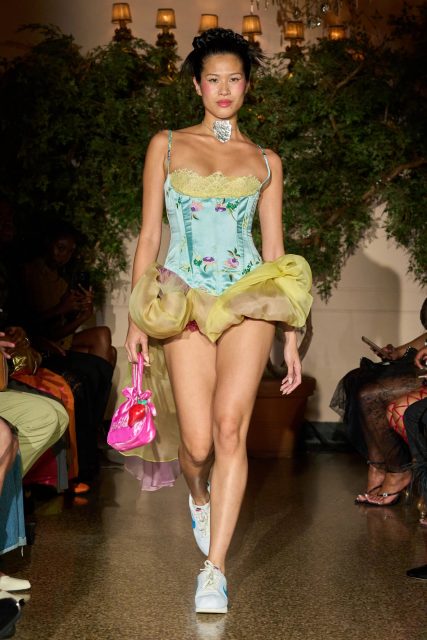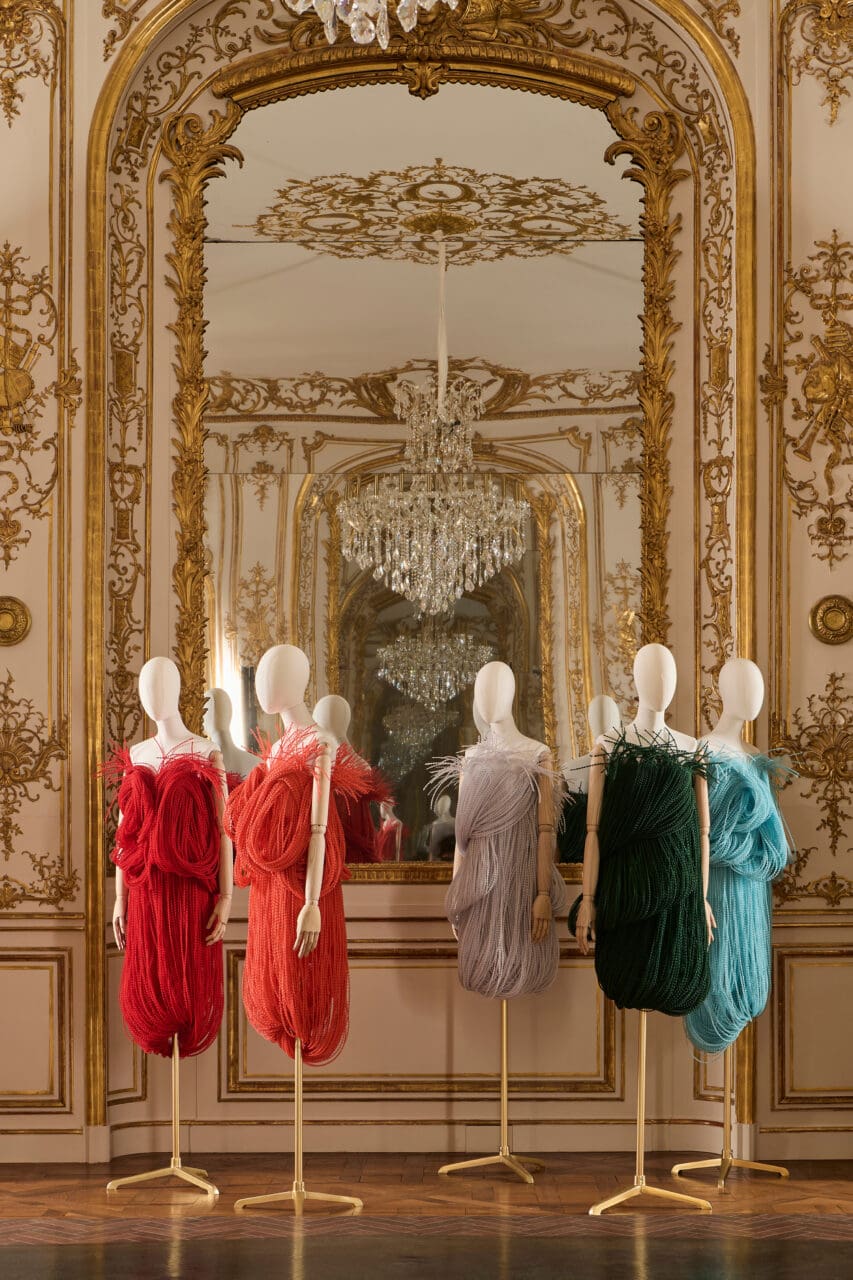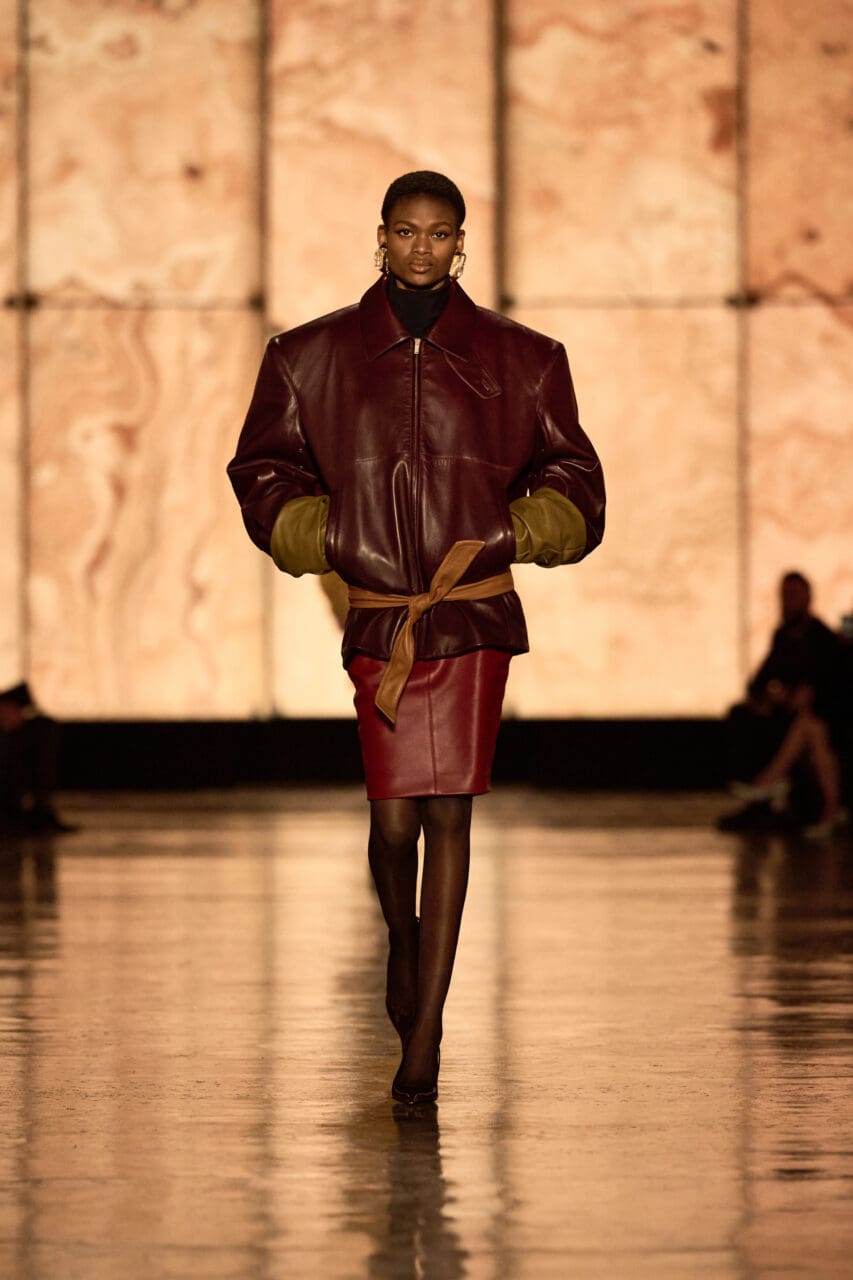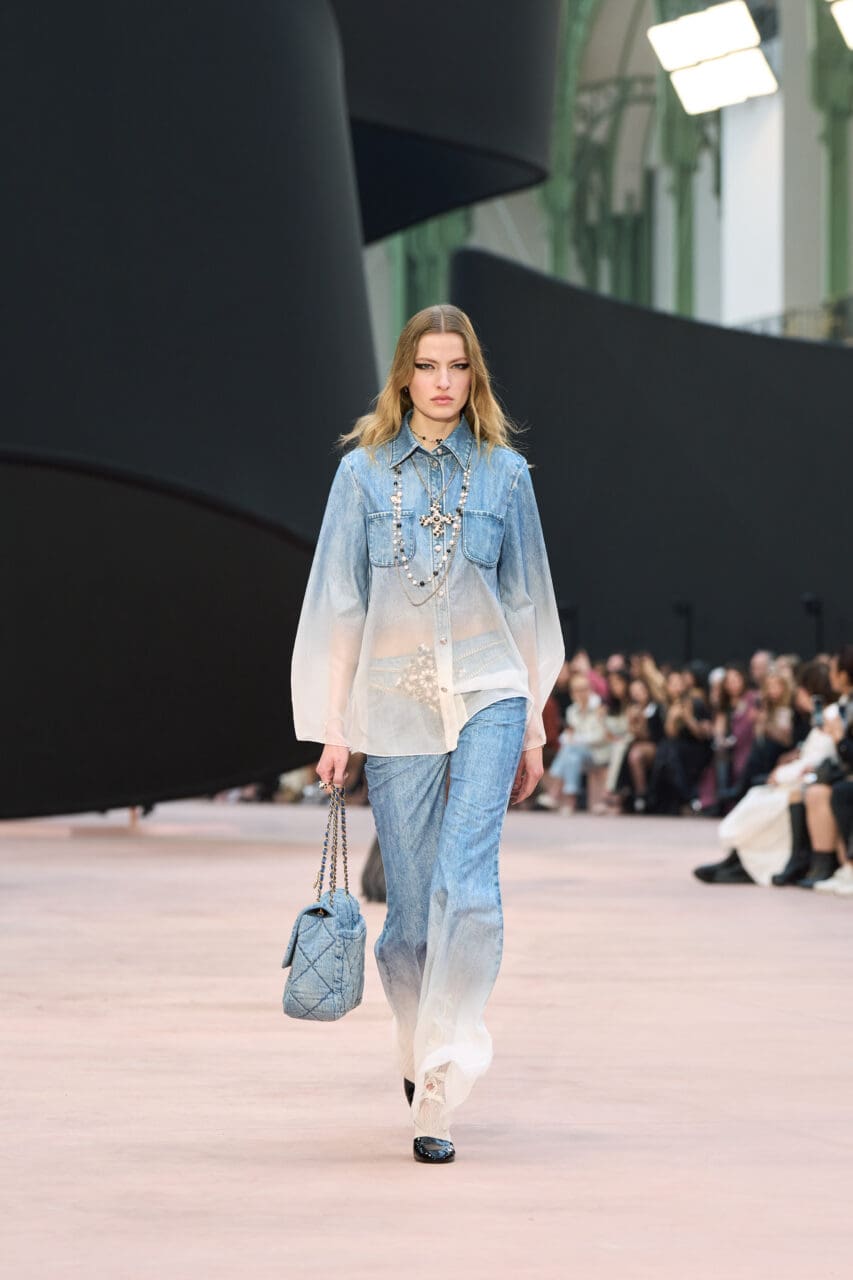“Everything sucks. We’re all doomed. The world’s on fire, but we’re doing a fashion show because that’s what we know how to do.” So said Collina Strada’s Hillary Taymour at her Chinatown studio a few days before her presentation. On the show’s soundtrack, Oyinda sang “Why are we here, the earth’s on fire,” and the models walked out, their arms clenched at their sides, forcing a wide smile. When they got to the end of the runway, they let it all out and assumed their “real” face, the face of young people who are constantly asking themselves “Why are we here? The world’s on fire.” It was brilliant. (At my appointment, Charlie Engman, Taymour’s frequent collaborator, had asked me, “Do you know the ‘This Is Fine’ meme? That’s the inspiration.”)
Other than river temperatures rising so high that fish are boiling instead of swimming, or the torrential rains that have turned Hong Kong into white river rapids (or, or, or…), one of the current things making us feel “doomed” is the development of AI. Especially in the creative fields, there is a constant underlying feeling that AI will take our jobs. There’s been an AI Fashion Week and fashion shows in the metaverse. But no one had yet approached AI as what it is at its core: a tool for creativity.
In April, Taymour and her team fed all of Collina Strada’s previous collections into the machine, and for seven weeks they worked on refining the results, a constant back-and-forth with the machine to teach it what they liked and what they didn’t, until they eventually settled on the final designs. “[The AI offered] different draping elements that kind of feel chaotic but also fancy and really fresh,” Taymour explained. “It’s all very edgy but also relaxed and super-femme; that feels new and interesting.” The process yielded a set of results that at first may seem like they are at odds: On the one hand, it distilled the Collina Strada essence into its purest Collina state, like exploding the atom and finding what’s inside, and on the other, it pushed the Collina aesthetic even further into the most Collina Strada it can be, imagining things beyond what we think is possible in the real world.
Of course, Taymour—for all her flights of fantasy and her maximalist aesthetic—is a pragmatist at heart. So after she had settled on her AI designs, her team then had to do the impossible: figure out how to construct them—not an easy feat considering the algorithm’s penchant for imaginary draping techniques, ruffles that appear as if from thin air, and other sartorial M.C. Escher conundrums. Not only did they need to figure out how to re-create them in real life, they had to do it in a way that would allow them to easily put them into production. Kudos to Taymour’s incredible design team, because they actually pulled it off.
There was a collage element to almost every look. Take the delicate blouse with softly pleated cups and an asymmetrical hook-and-eye closure under the left breast, attached to long, sheer sleeves with a gathered detail via a delicate honeycomb-pattern weave around the shoulder. It was worn with patchworked “boxer shorts” embellished with a cascade of lace ruffles to one side that could easily place them in the category of “evening” boxers. A ballet pink satin suit with a slightly slouchy jacket and straight-leg trousers was decorated with white lace appliqués applied by hand. The model had an abundance of white tulle ruffles on her back, carried cross-body style across her chest by a myriad of silver ball chains. “I can just put this on over anything and I am ready for a black-tie function,” Taymour said as she threw it on over her clothes. It was all about function this season. “I want it to be like, ‘I’m going to the party, but I’m also sitting on the couch and I don’t care,’” she said. “I’m so sick of going to these events and just seeing the girls not be able to sit down. Everything’s ripping. They can’t move. It’s too stiff. I want everyone to be comfortable and still put-together in a suitable way to take on the patriarchy, you know what I mean? We don’t have to stuff ourselves in high heels to do it.” (For the record, her models were wearing styles from an upcoming collaboration with Ugg.)
Continuing the formal/unformal theme was a gathered floral ball skirt worn with a hoodie embellished with a star design; a spectacularly sexy little mint T-shirt dress made from the softest cotton jersey with an asymmetric ruffle detail at the bottom; and a white tank “wedding dress” made from jersey with a dropped waist and oversized ruffles that seemed to have a life of their own. Everything was draped, asymmetric, ruffled, fringed, tied, ripped. A beautiful chaos from whence elegance emerged: Witness the baby pink gathered minidress with one short sleeve and a bit of cream lace peeking out from underneath. And the dress with an elongated corset and a heavily draped skirt in shades of yellow and green, and its cousin, made from a black velvet bodice and a white jersey skirt.
A minidress in a double-layered plaid fabric had soft mini panniers. Taymour showed it over shirred capri pants. “I really wanted to do boning in this way; it’s just very softened,” she said, showing off the dress. “You can sit in it and it’s very functional, but it still gives you shape. I try to do the big dresses in a way that you can really wear them and squeeze them into your closet afterward.” To further prove it wasn’t all just lip service, the musician King Princess, who closed the show in a black lace gown with a half-ruffled lace skirt attached to a belt, came back out to perform, screaming into the mic while jumping and dancing around the runway. With the setting sun turning the Manhattan skyline a bright shade of orange, it was a fitting end to a fine evening.
Editor
Laia Garcia-FurtadoCredit
Lead Image: Paolo Lanzi / Gorunway.com





